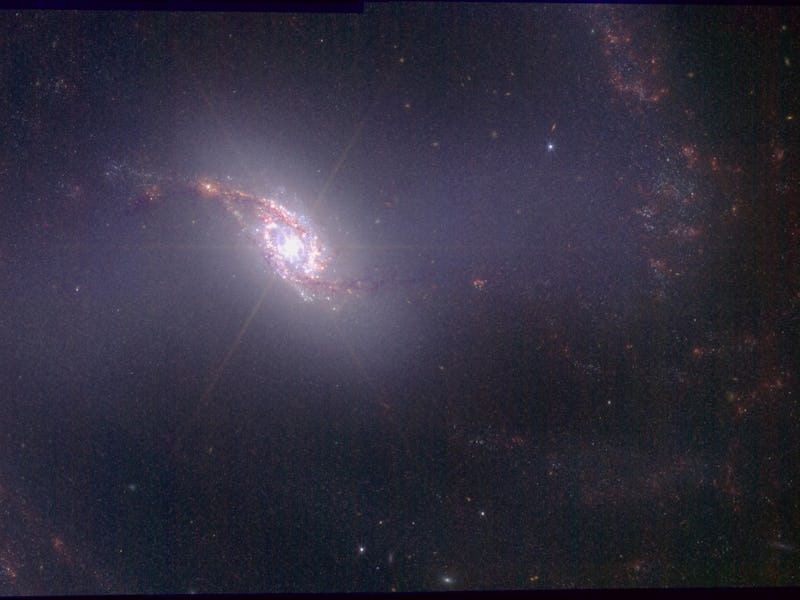Look! New Webb Telescope image reveals a rare galaxy close to the Milky Way
A graduate student on summer break processed these Webb images of the Great Barred Spiral Galaxy, and the results are breathtaking.

Raw data from the James Webb Space Telescope has yielded a stunning image of a nearby galaxy, with a little help from an unofficial photo processor.
"I chose NGC 1365 since that was the most recent interesting target that the Space Telescope Science Institute, or STScI (the organization that runs JWST) released public images of," Redditor u/SpaceGuy44, an astronomy graduate student at a university in California, tells Inverse.
The Great Barred Spiral Galaxy, formally known as NGC 1365, is 56 million light years away, and it's one of a sample of galaxies that astronomers chose for some of Webb's earliest observations, with the goal of learning more about star formation in the near reaches of the universe. NGC 1365 is a perfect candidate, because it's a star-forming galaxy with an actively feeding supermassive black hole at its center, and it happens to be "face-on" toward Earth, so astronomers can see its elaborate double-barred spiral structure in all its glory.
In most barred spiral galaxies — including, most likely, our own Milky Way — a bar-shaped structure made out of older, less metallic stars stretches across the center of the spiral. About two-thirds of all spiral galaxies have bars, but NGC 1365 is a rarer specimen: it has two bars, with one inside the other: an outer bar spanning the galaxy horizontally, and an inner bar running from the 10 o'clock to 4 o'clock positions.
What did you do on your summer break? Redditor u/SpaceGuy44 processed this NIRCam image of the Great Barred Galaxy, NGC 1365.
The complex structures of bars and spirals form, in part, thanks to stars, gas, and dust orbiting the galactic center at different speeds, forming waves of higher and lower densities that eventually become the bars and spirals we see in galaxies like NGC 1365. And the gravity from NGC 1365's bars may help draw material toward the center of the galaxy, fueling new star formation and feeding the ever-hungry black hole at its heart.
The first image, captured with Webb's NIRCam instrument, shows the galaxy's light in the near-infrared wavelengths; the second, from the MIRI instrument, shows a longer-wavelength mid-infrared view.
“I do think I could've done a better job with making the galaxy pop if I weren't rushing to post it before others,” says u/SpaceGuy44, but we’re pretty impressed.
Unlike the striking full-color images Webb's official processing team has released to the public over the last few weeks, the releases u/SpaceGuy44 is talking about are in a data format called FITS (Flexible Image Transport System).
According to NASA, "FITS is the data format most widely used within astronomy for transporting, analyzing, and archiving scientific data files. FITS is much more than just another image format (such as JPG or GIF) and is primarily designed to store scientific data sets consisting of multidimensional arrays (images) and 2-dimensional tables organized into rows and columns of information."
In other words, although anyone can download a FITS file from the Webb archive, you need specialized software to convert the file to a format that image editing software like Photoshop or GIMP can handle. From there, it's a matter of selecting red, green, and blue filters and aligning the image.
"You do need some skill with photo editors," says u/SpaceGuy44, "but I just started with GIMP a month ago and I think I've gotten pretty good with it."
The file conversion software, including Fits Liberator and SAO DS9, is accessible to the public, and there are tutorials online (including several hosted by STScI).
"I'd say that most people that process these images are amateurs unless the images are released by NASA themselves or another research team," says u/SpaceGuy44. "While I'm not an amateur, I just had a lot of passion and free time to do this since I'm on summer break from grad school."